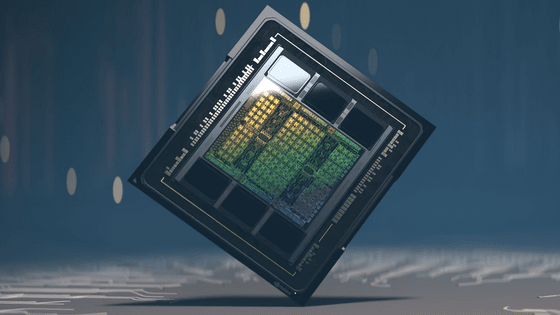How did NVIDIA CEO Jensen Huang, whose leather jacket is impressive, grow NVIDIA into a global giant?

NVIDIA is a semiconductor company that develops high-performance GPUs. GPUs were previously used only in the gaming and CG fields, but in recent years they have also been used in fields such as AI research and high performance computing (HPC), and as the demand for GPUs increases, the technology industry NVIDIA's presence in the market continues to grow. The foreign media The New Yorker has summarized the background of NVIDIA CEO Jensen Huang and the background of the establishment of NVIDIA.
How Jensen Huang's Nvidia Is Powering the AI Revolution | The New Yorker

Mr. Huang was born in Taiwan in 1963 and moved to Washington State in the United States when he was nine years old to live with his uncle. Afterwards, Mr. Huang entered the Oneida Baptist Institute, a boarding school in Kentucky, at the recommendation of his uncle. My uncle believed that Oneida Baptist Institute was a prestigious boarding school, but in reality there were many students with bad behavior. Mr. Huang's roommate could not read, so Mr. Huang taught his roommate how to read, and in return, his roommate taught Mr. Huang how to raise the bench press.
At the time, Mr. Huang was too young to attend classes at Oneida Baptist Institute, so he attended a nearby public school. However, Mr. Huang, who is of Asian descent, quickly became the target of bullying. Huang credits the experience of being bullied as helping him develop resilience.
A few years after Mr. Huang immigrated to the United States, Mr. Huang's parents also moved there. The Huang family then settled in Oregon. Mr. Huang was a nationally ranked table tennis player in high school, while also focusing on club activities where he studied mathematics and computer technology. Mr. Huang skipped two grades in high school and entered the electrical engineering department at Oregon State University at the age of 16.

Approximately 250 students are enrolled in the electrical engineering department at Oregon State University, of which only three are female students. Mr. Huang fell in love with one of the female students, Mr. Lori Mills, and was particular about his appearance and completing assignments in order to make a good impression on Mr. Mills. After graduating from college, Mr. Huang and Mr. Mills both worked as microchip designers in Silicon Valley and married a few years later.
Mr. Huang founded the company in 1993 with Chris Malachowski and Curtis Priem. The company founded by the three people was called 'NVision' at the planning stage, but NVision was a play on the name of a toilet paper manufacturing company. Mr. Huang decided to name the company ``NVIDIA'', a play on the Latin word ``invidia'', which means ``jealous''.

When NVIDIA was founded, the gaming industry was in need of a dedicated chip for handling polygons, and NVIDIA developed a polygon processing chip to meet the demand. At the time, it was not clear whether triangular or square polygons would be the mainstream in the game industry, so NVIDIA developed a chip that specialized in processing square polygons. However, immediately after NVIDIA released its first product, Microsoft released ``graphics software that only supports triangular polygons.'' As a result, NVIDIA was forced to make a sudden switch to chips capable of processing triangular polygons, fired half of its 100 employees, secured funds, and devoted all its efforts to producing chips that could process triangular polygons.
``RIVA 128'', which NVIDIA released with the company's fortunes on the line, became so popular that it sold 1 million units in 4 months. NVIDIA received enough funding to continue operating. Even after securing sufficient funds, Mr. Huang encouraged employees for several years using the phrase ``Our company will go out of business in 30 days.'' The phrase 'Our company will go out of business in 30 days' is still NVIDIA's unofficial slogan.

The New Yorker article also talks about the secret story behind the birth of the GeForce series and CUDA.
Related Posts:
in Note, Posted by log1o_hf







